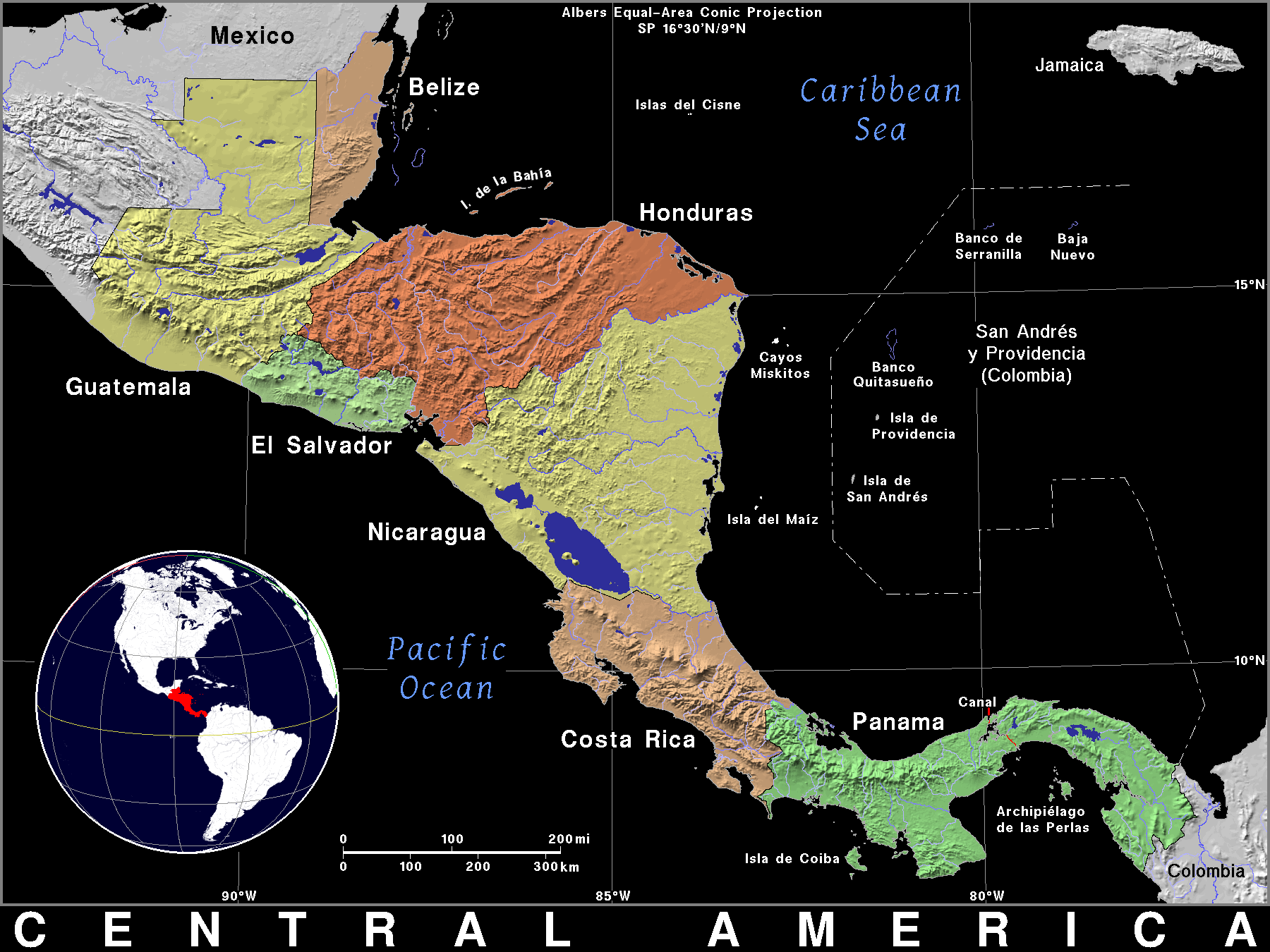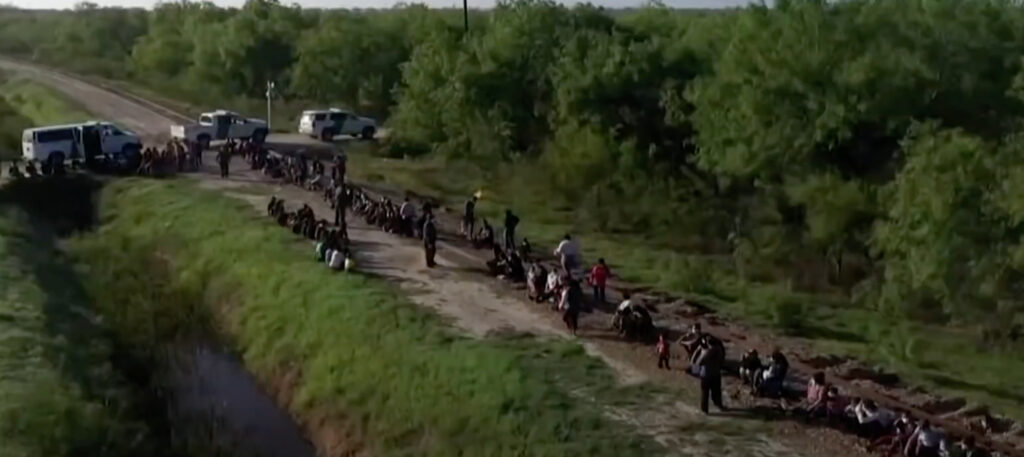
The infinite path towards the north
The so-called Mesoamerican migratory corridor — one that includes Central America and Mexico to get to the United States — is the path most used by migrants to get to the U.S. The corridor is the largest of its kind in the world, one of the most dramatic from a human point of view, and also one of the most problematic due to its economic and political consequences.
Hundreds of thousands of people traverse it each year, either individually or organized in “migrant caravans,” a very recent occurrence for its ability to convene groups of people. Most come from Central American countries, especially from the so-called northern triangle of that region: Guatemala, El Salvador and Honduras. But the endless train of people is joined by people from all over, giving rise to a market where transnational crime prevails.
The majority are young men and women, also children alone or accompanied by their families, all ready to face great dangers, but stimulated not only by a terrible personal situation, which they perceive to be devoid of any future, but by the multiplying logic imposed by the growth of social support networks in the destination country, as well as the implementation of a “culture of emigration” that, fueled by the cult of consumption and the veneration of the American Way of Life, extends the idea of migrating using new information technologies.
Migration means a constant drainage of the main productive forces of the countries of origin. The economic consequences do not replace remittances that exceeded 70 billion dollars in Mesoamerica in 2020, although they are often vital for the existence of the people. It is an investment for consumption, which is transferred to imports, with little impact on national development, so it does not break the vicious circle that generates new migrations. The daunting scenes of these migrants piling up on both sides of the Mexican border, or traveling the route’s dangerous path have put the Biden administration in crisis, but it is a problem that no U.S. administration has been able to solve in the past 40 years.
The daunting scenes of these migrants piling up on both sides of the Mexican border, or traveling the route’s dangerous path have put the Biden administration in crisis, but it is a problem that no U.S. administration has been able to solve in the past 40 years.
In the first place due to the enormous economic gap and the demographic differences that exist between the United States and these countries. While the United States shows a labor force deficit estimated at 38%, in Mesoamerican countries the surplus is around 25%. Based on this data, some analysts believe that this immigration could solve 80% of the workforce that the United States requires, so it makes no sense to stop it.
In part they are right because immigration effectively supplies a labor force necessary for certain jobs, especially in the area of basic services, but this calculation does not take into account the quality of the labor force required by the fundamental lines of the U.S. economy, and the cultural insufficiency of Mesoamerican workers to satisfy it, which explains why rejection can be imposed without substantively affecting the country’s economy.
The United States does not pretend to reject any immigration, only the “unwanted” one, where the Mesoamerican and other Third World countries fall into. Discrimination is expressed for social reasons, such as race or national origin, but it also has economic causes based on the enormous existing cultural gap, as a consequence of the underdevelopment that characterizes the countries from which these migrants come.
The result is that, with exceptions such as Cubans due to their higher cultural level, these Third World migrants are located at the lowest levels of the North American social scale, despite the fact that the labor participation among them is higher than 70%, a figure larger than that of the rest of the components of that society — which contradicts the myth that they live on public charity.
Already during the government of Bill Clinton there was a break with immigration policy and the treatment of migrants inherited from the civil struggles of the 1960s. It was Clinton — governing using the conservatives’ agenda, in spite of them — in 1994 began the construction of the border wall under the illustrative name of Operation Gatekeeper.
Starting with the attacks of September 11, 2001, the war against terrorism became the perfect excuse to act against unwanted immigration and radically changed the paradigms in the treatment of the immigration problem. It was the time when the Safe Communities Programs were created to go after unwanted immigrants not only at the borders, but also in the areas of housing and employment, so that deportations increased from 175,000 to more than 400,000 in barely a decade.
As a result of the impact of globalization on the North American labor structure, and the economic crisis that characterized the moment, with notable effects on sectors of the white working class, anti-immigrant sentiments found a new breeding ground on a social scale during Barack Obama’s eight years as president.
During his administration, Obama promoted the adoption of comprehensive immigration reform, which succumbed due to the lack of consensus in Congress. However, it made some important decisions based on better treatment of immigrants, such as the implementation of the Deferred Action Program (DACA), which authorized the permanence of those undocumented immigrants who had arrived in the country as minors, the so-called “dreamers”. He also rolled back the Safe Cities Program and carried out other loosening of immigration regulations.
But these measures did not facilitate legal entry to the United States, nor did they stop the volume of deportations, so that the true legacy of the Obama government on the immigration issue was to set the record of 2.7 million people expelled from the country under his mandate.
Few times has the official U.S. discourse been so starkly discriminatory towards immigrants and the treatment of them so inhumane and vexatious as during the administration of Donald Trump. In fact, fighting immigration and despising immigrants was the then-president’s resource par excellence to mobilize in his favor the most xenophobic currents in North American society, which is why the immigration issue became the most polarizing and toxic of his campaign policies and in the exercise of government.
Trump established a “zero tolerance” policy for irregular immigration, making the construction of the border wall the most publicized of his many immigration restrictions. The rigor of his rejection extended to the treatment of migrant children and even encompassed regular immigrants from all over the Third World, demonstrating that it was a policy guided more by xenophobia than by the economic interests of the country.
An exponent of another philosophy, upon taking office, Joe Biden announced an ambitious bill, dubiously approved by Congress, that proposes a roadmap to citizenship for some 10 million irregular immigrants. He has also made important decisions on immigration policy, and has proposed a policy of negotiations with Mexico and the countries of the Central American triangle, which distinguish him from Trump. But, again, the fundamental thing has been the control of the borders. Vice President Kamala Harris made it very clear in a message to thousands of people who waited stranded along the Mesoamerican corridor: “Do not come,” she warned them.
In the first six months of the new Biden administration arrests and rejections at the southern border exceeded the average of the last 20 years, and almost 48,000 children were detained, more than the entire fiscal year of 2020, who remained in prison-like conditions that Biden himself considered “totally unacceptable.”
Numerous factors explain the reasons for irregular migration through the Mesoamerican corridor, the way in which this adventure unfolds, deadly in many cases, and the dramatic consequences that this entails, both for the region and its inhabitants, as well as for transit countries and their destiny.
It also explains why the United States is the natural destination of this migration and that the scope of its impact encompasses the entire social fabric of the countries of origin. To a large extent the education of Mesoamerican children, and others from more distant regions of the planet, is oriented in that direction, because they move towards a known world idealized through the mass media and social networks, which shows why this avalanche is occurring now, and not before, despite the fact that the economic conditions that can explain it are very similar in time.
“Unwanted immigration” from the Third World, which the United States does not know how to manage, is the result of the overflows of neoliberal globalization, so its possible solution does not appear in the foreseeable future no matter how much the mistreatment of its victims in the international order may be.

